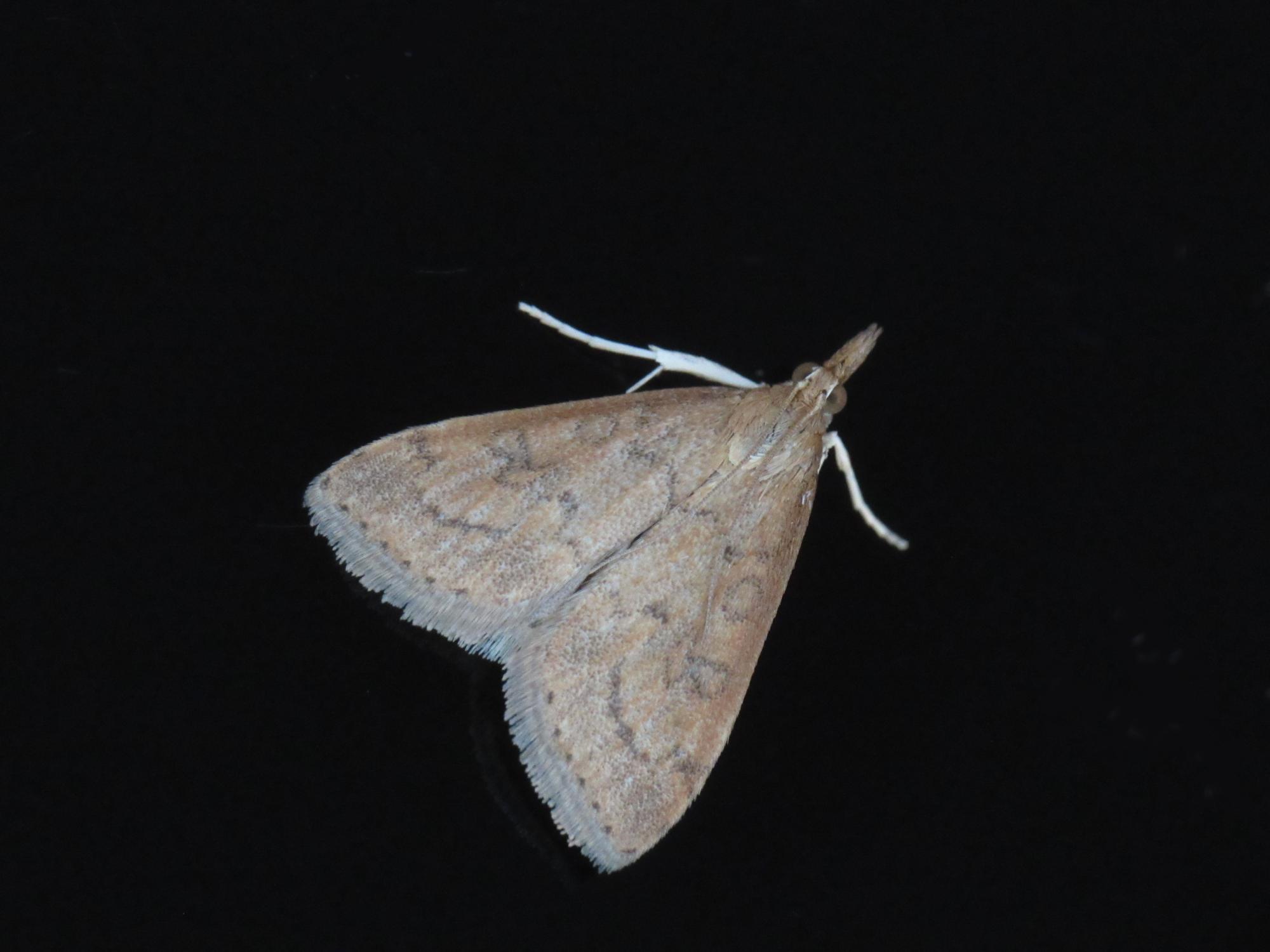MINIATURE MOTHS
Celery Leaftier. The two lower spots on their wings form a distinctive figure-eight shape (sometimes faded).
Lucerne Moth (aka Celery Stalkworm). These moths have several broods; I find them continuously from April through early November.
Bee Moth. This species was introduced from Europe and feeds on the honeycombs within bee and wasp nests. The individual at left is a female. (Compare her with the quite different-looking male below.)
This is a male Bee Moth. I find this species at my UV lights in April and May.
Another Celery Leaftier moth. I find these moths every month from March through December. They are particularly abundant in late summer and fall. I found one on December 26, 2016 (during a brief warm spell).
Another Gold-striped Leaftier Moth. Notice the pair of tiny dots above the horizontal dash on each wing.
Lucerne Moths are abundant in our area and are easily flushed from the grass during the day.
Gold-striped Leaftier Moth. This is a very common fall species. I find these moths in large numbers in September and October.
Poison Hemlock Moth. Note the red and blue spots in the center of the wings.
Phtheochroa riscana. Attracted with UV lights and photographed on September 24, 2023.
Jack Pine Budworm moth. This is my only sighting. Photographed on July 3, 2021.

Poison Hemlock Moths are not native to America. They were accidentally introduced, as was their namesake host plant. These moths are very common at my lights. I have found them from March through November.